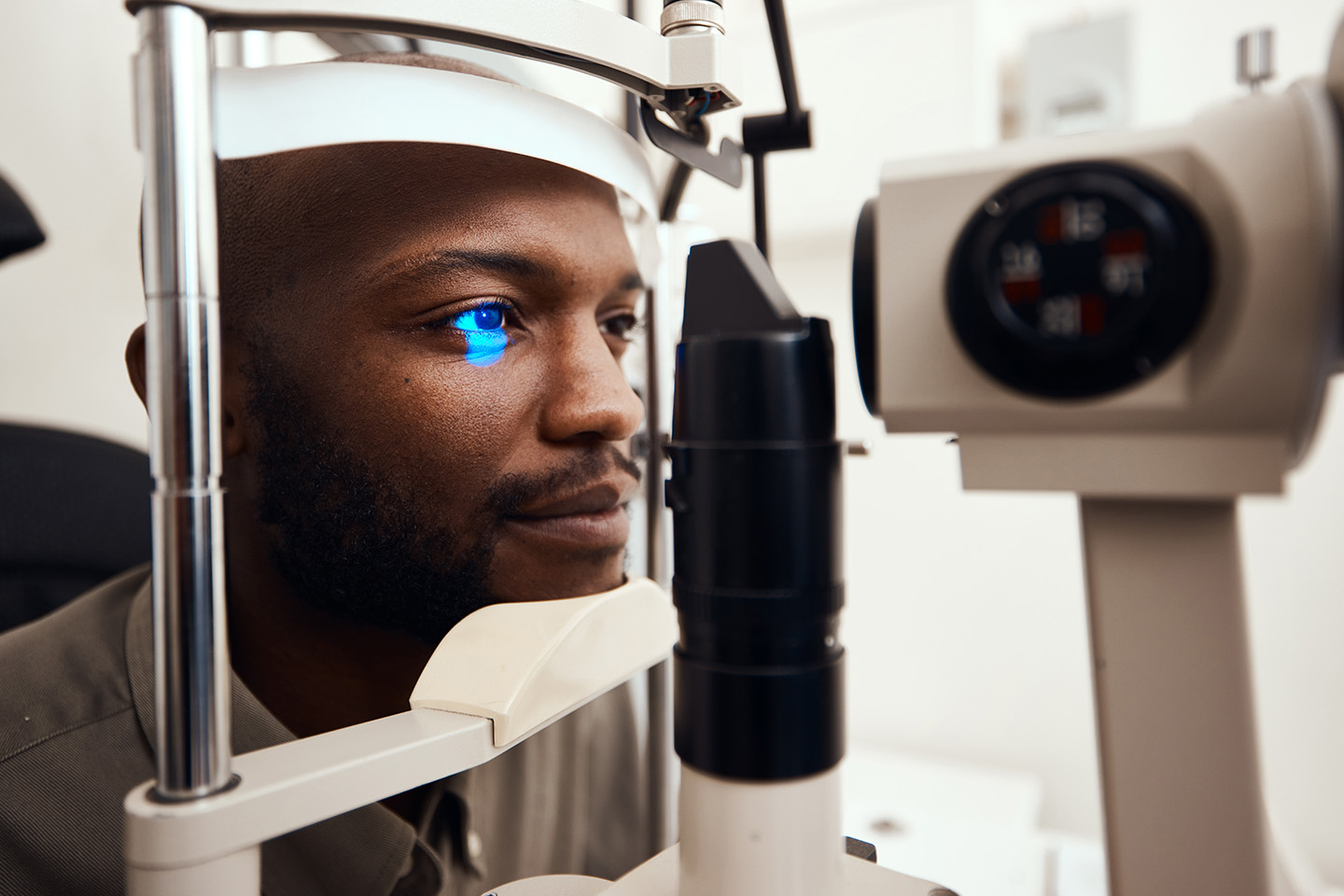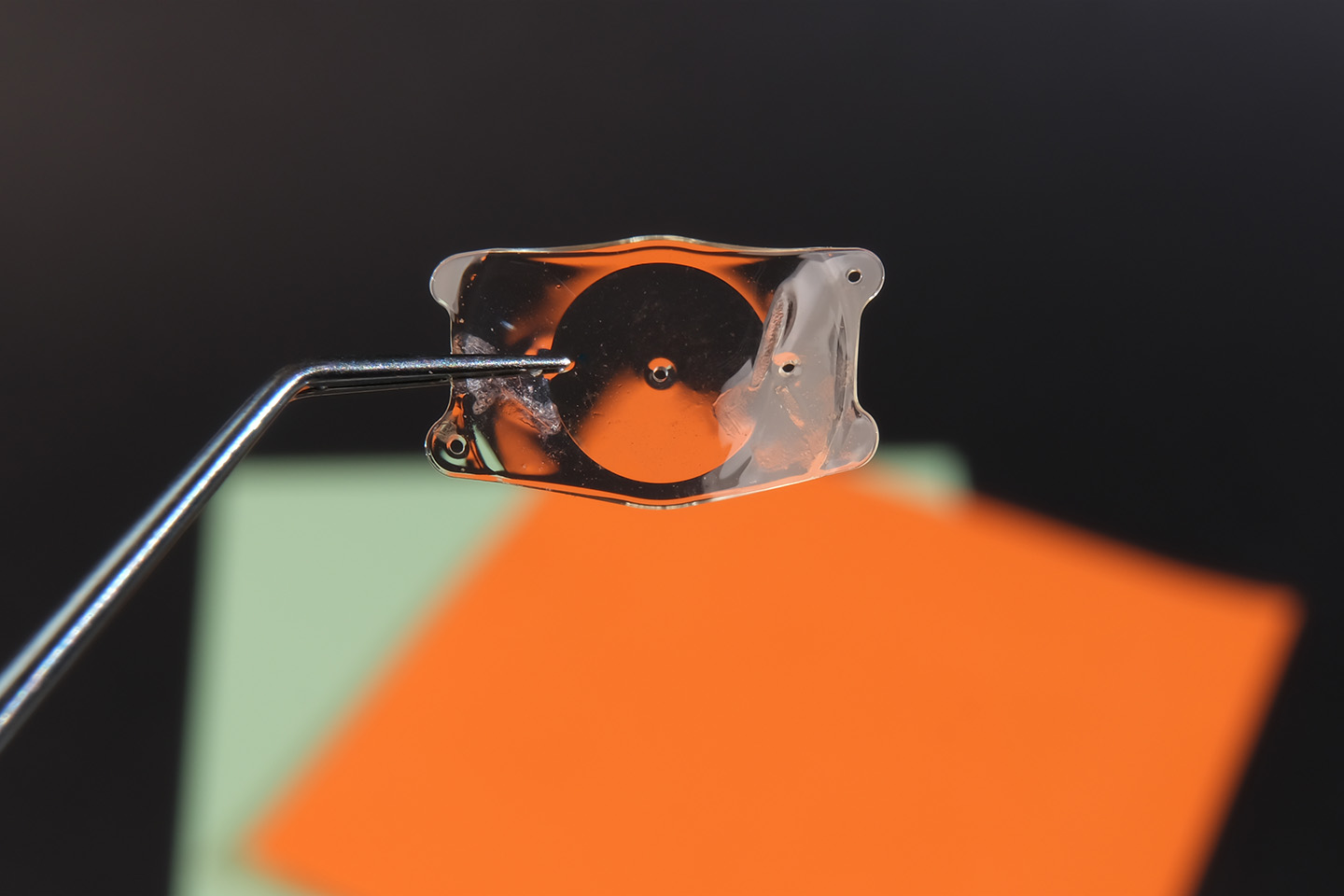ICL vs. LASIK: What’s the Difference?

Millions of individuals who wish to be free of glasses and contact lenses choose to have vision correction surgery each year. LASIK eye surgery is one of the most common elective eye surgeries in the U.S. today, but it’s not right for everyone. Options like using an implantable collamer lens (also called implantable contact lens, or ICL) may be better suited for patients with certain eye conditions. Both surgeries can correct refractive conditions; however, there are significant differences in how the procedures are performed and how they achieve results.
How ICL Benefits Patients With Thin Corneas, Severe Myopia, and Dry Eyes
ICL is a vision correction surgery that is often beneficial for patients with thin corneas, dry eyes, or moderate to severe nearsightedness (with or without astigmatism). The procedure introduces an artificial lens, called an EVO ICL™, between the eye’s natural lens and the iris. The eye surgeon simply makes a small incision — only a few millimeters long — at the edge of the cornea and then inserts the EVO ICL. The EVO ICL is an advanced lens composed of a 100% biocompatible collagen copolymer that works in harmony with the natural lens. At ICON Eyecare, we’re proud to use ArcScan’s Insight® 100 advanced technology to precisely fit your ICL.
Pros of ICL
- It is an outpatient procedure with a quick recovery. ICL typically takes approximately 15 minutes, often with immediate vision improvement and healing within 24 to 48 hours.
- It has a high success rate. An FDA study found that 75.9% of patients reported 20/20 vision or better in the eye with the EVO ICL, and 98.9% had 20/32 vision after six months.
- It produces sharp, clear vision. The EVO ICL works with the eye’s natural corneal shape, rather than reshaping the cornea or removing corneal tissue (as in LASIK or PRK). This results in superb vision quality, particularly with high degrees of prescriptions, and also supports excellent nighttime vision.
- The artificial lens adds a layer of UV protection. The collamer material of the EVO ICL has unique properties that offer protection against UV rays.
- It does not cause or worsen dry eye syndrome. ICL does not disrupt or damage corneal nerves, so dry eyes are not a concern.
- It can correct severe prescriptions. ICL can correct high degrees of nearsightedness — up to -20.0 — that cannot be achieved with LASIK.
- It is fully reversible. Although it can be a permanent solution, the EVO ICL can always be removed if the need or desire ever arises.
Cons of ICL
-
- It’s likely not covered by insurance. ICL is an elective procedure and must typically be paid for out of pocket. It also generally costs more than LASIK due to the use of the EVO ICLs.
- It’s not for everyone. ICL is not recommended for individuals who are pregnant or nursing, are younger than 21 or older than 45, have moderate to severe glaucoma, have an unstable prescription, or whose eye may not be the appropriate shape to properly fit the EVO ICL. It’s also not typically recommended to correct farsightedness.
-
- There is a risk of infection and inflammation. As with all surgical procedures, there are risks with ICL. Because the lens is implanted within the eye, there is an increased risk of infection and inflammation compared to LASIK. However, infection is extremely rare with the proper use of postoperative antibiotic and/or steroid eye drops, and follow-up care. Minor inflammation is more common but can be resolved with eye drops.
- It may cause increased eye pressure. Typically, any increase in pressure will resolve on its own in time. In rare circumstances, pressure-reducing eye drops may be given or the EVO ICL removed.
- You may experience glare or halos. This is another potential side effect that may be particularly noticeable at nighttime. Compared to LASIK, however, glare is much less present after ICL.
How LASIK Works To Correct Nearsightedness, Astigmatism, and More
Laser-assisted in situ keratomileusis, more commonly known as LASIK eye surgery, corrects farsightedness, nearsightedness, and astigmatism. The procedure uses advanced laser technology to create a small flap in the cornea and then reshape the cornea’s surface.
Pros of LASIK
-
- It is a quick procedure with a short recovery. Like ICL, LASIK is an outpatient procedure that takes approximately 15 minutes in total. The recovery time for LASIK surgery is typically only a few days, and many patients report being able to see clearly immediately after surgery. In some rare cases, recovery can take up to a week.
- It has high success and patient satisfaction rates. More than 99% of patients achieve vision better than 20/40, with more than 90% achieving 20/20 or better. The patient satisfaction rate for LASIK is approximately 96%.
- It is less invasive than ICL. LASIK reshapes the cornea, which is the outermost layer of the eye. The procedure does not require the eye surgeon to enter the eye, unlike ICL.
- It is a permanent solution. Once the cornea has been reshaped, it cannot be reversed. It’s common, though, for our eyes to change as we age. Some of these changes may require an enhancement procedure. At ICON Eyecare, we offer a vision commitment plan that covers any enhancements deemed necessary by your surgeon free of charge, as long as you continue annual exams with your optometrist.
Cons of LASIK
-
- It’s likely not covered by insurance. Like ICL, LASIK is an elective procedure and must typically be paid for out of pocket.
- It’s not for everyone. LASIK is not recommended for patients with underlying eye conditions such as glaucoma, cataracts, or severe dry eye, or those who have had drastic changes to their corrective prescription over the past year.
- Side effects can occur. Common, temporary side effects include dry eye, halos around bright lights, light sensitivity, blurred vision, and glare (especially at night). These side effects typically improve within three to six months. In rare cases, additional treatment may be necessary.
- It has risks of complications. Infections, a dislocated or wrinkled corneal flap, or negative vision changes are serious but rare complications of LASIK. They occur in less than 1% of all LASIK procedures, according to the American Refractive Surgery Council.
Discover Your Vision Correction Options at ICON Eyecare
When it comes to ICL vs. LASIK, which is right for you? The experienced eye surgeons at ICON Eyecare can recommend the best option based on your current prescription, age, corneal shape and thickness, pupil size, and the presence of any conditions such as dry eye or glaucoma. We take pride in our commitment to putting our patients first and delivering high-quality results. Request an appointment today.
[DISPLAY_ULTIMATE_SOCIAL_ICONS]








